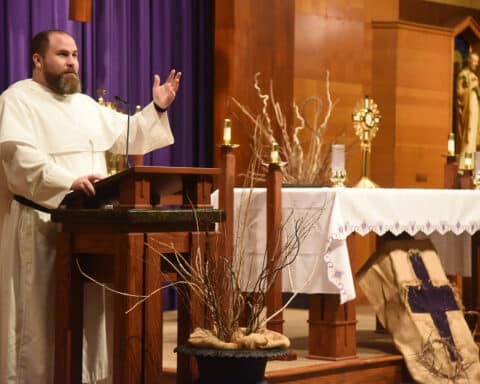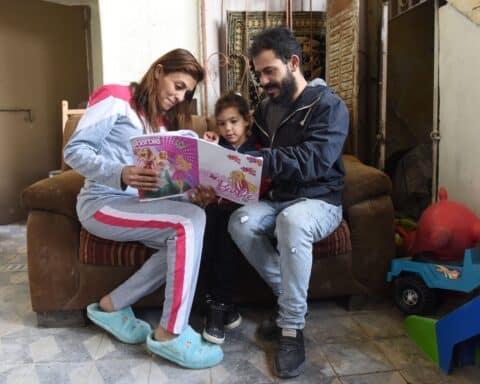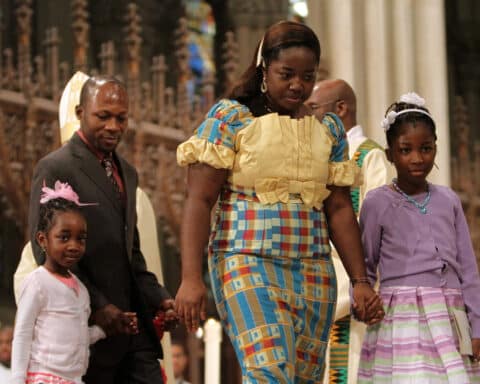I stuck the prayer card into the visor of the minivan, hoping that at least the sight of it each morning would remind me to say a quick prayer as we got on the road for school drop-offs and then the afternoon pickups.
Within 24 hours of putting it there, my 5-year-old questioned its existence.
“Mom, why is the ‘monsterance’ in our van?”
“The what?” I replied. I was thrown off by her mispronunciation.
“The ‘monsterance.’ Jesus’ sun house.”
“Oh! The ‘monstrance!'” I quickly realized. “It’s a new prayer card the Sisters sent me.”
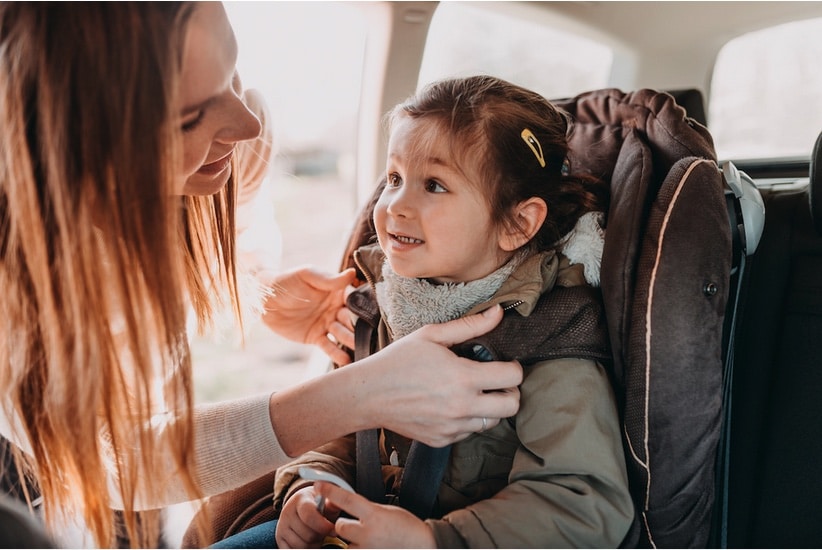
Confused, my daughter replied, “So our van is a church now?’
“No …” How’d she jump to that conclusion, I thought.
“Jesus can buckle up next to me. I’ll share my booster seat.”
And with this matter-of-fact declaration, she asked if I could turn on a song from our morning playlist.
I couldn’t get this description of a monstrance out of my head, though. Jesus’ sun house. As if Our Lord is working on his beach body tan for the coming summer.
Seeing and hearing
Kids just simply call it as they see it, though, and here was a little girl who sort of knew the name for the object that displays our Eucharistic Lord so we can adore him. I could be proud she was close to getting it right, and proud she wanted Jesus to buckle up next to her in her booster seat.
This isn’t necessarily due to my deeply involved efforts to teach profound Eucharistic theology to my kindergartner, by the way. This is not a reflection on how good my husband and I are at raising our kids Catholic. She knows the name of the monstrance (sort of) because she’s come with me to my regular Holy Hour, goes to adoration at her Catholic school and has heard the term used a time or two in casual conversation around our dinner table with more than a few priests as regular guests.
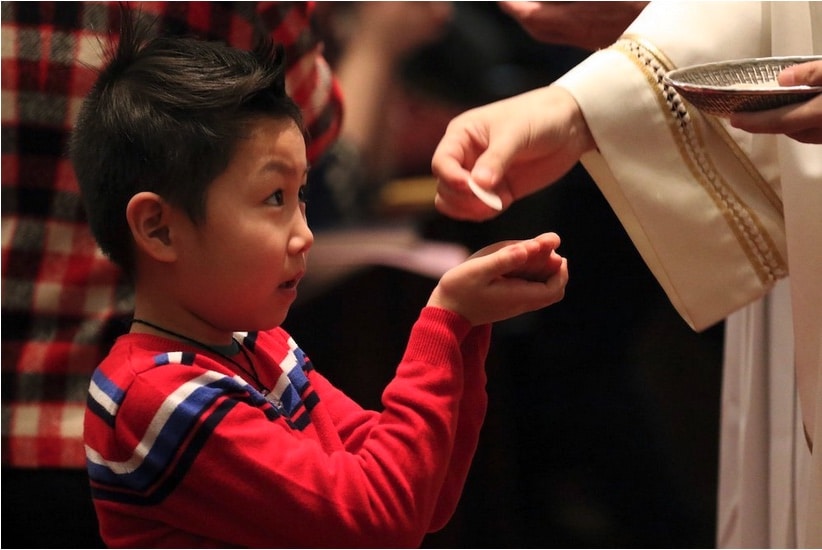
That quick conversation is simply evidence that love of the Eucharist sort of happens by osmosis, at least at first. It’s an absorbed understanding, that this tiny white host held high by Father in the latter half of Sunday Mass is somehow important. It’s this visible reality, that mommy and daddy bow their heads out of reverence and love as they step forward to consume that tiny white host, all while pinning the toddler’s arms to her side so she doesn’t reach forward and try to swipe it. It’s this understood concept, that we genuflect when we see the red candle, we sit quietly and gaze in the direction of the gold sun-looking statue, that we order the entire weekend around when we’re going to see Jesus at church.
As with most things, kids pick it up when it’s seen, heard and experienced, usually bit by bit.
Words. Walking. Using a fork. Going potty in the potty. Reading. Writing. Making a bed. All things I’ve done my darndest to instruct my children on how to do, and all things they’ve eventually learned to do in their own way, usually by watching others.
When my 5-year-old first walked, we noticed she put her hand on her hip, much the same way I’d stand at the stove and walk back and forth between the kitchen island and the sink. When my 2-year-old began talking, she called her older sister “Rosie,” a name she only ever heard her sister call herself.
Learned behavior becomes lived behavior, and this becomes the root of one’s reality.
Where revival begins
When it comes to our faith, the best religious education programs and the finest curriculums and the glitziest videos don’t hold a candle to a faithful family that attends Mass, prays at the dinner table and keeps Jesus at the heart of the home. It is there, in the home, where the learned behavior of faith becomes a lived behavior that establishes a clear and present reality: that Jesus matters, that our faith is important, and that everything is rooted in his perfect love for us.
There’s been much talk of revival lately. Prayer meetings lasting days. Big events with speakers and processions and expositions. Many books, and countless more articles, and endless videos about what revival is, and should be, and could be, and where and when it’ll happen. It’s obvious there’s a desire for renewal, that there is a clear and present hunger for an awakening to the Lord in a hurt and troubled world.
But what if revival didn’t begin in the places we expected, or the events we planned, or the buildings where we say revival should be? What if revival began at the kitchen tables, and in the nighttime prayers, and in the quick holy half-hour with a squirmy toddler on the floor, and in the pew the family slides into five minutes late on Sunday morning? What if revival began in the home, not in some orchestrated or managed way, but because a love of the Eucharist is witnessed, learned, lived and then becomes the foundation of a new reality, in even the youngest of hearts in the simplest of ways?
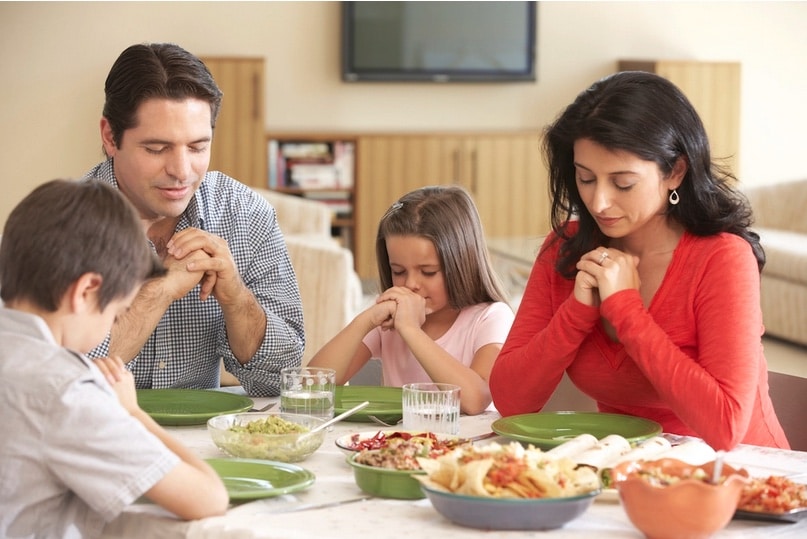
Grassroots renewal
I’m always struck by the fact that Jesus gives himself to us over a meal, at a supper, gathered with a found family of sorts. These misfit disciples, questioning and confused and perhaps a little frightened, witnessing a love the likes of which the world has never seen before. Instructed to do this again and again, to take and eat, this bread and wine, true flesh and true blood. Most of us eat meals where? With our family, at a table, gathered together at the end of long and busy days. Again and again, consuming that which is so familiar, but which tethers us together in new ways each time.
What’s more familiar than the meals we eat? What a gift, then, that the greatest thing we have as Catholics — the Eucharist — is something we encounter, receive and worship all within the context of a meal. What better way for us to teach our children that our lives must be oriented around this reality than to express to them that Jesus comes to us small, simple, humble and easy to receive, at a table of abundance to which we are welcomed? What could be more familiar to our little ones than to share with them that Jesus brings himself close to us, and so we can come close to him and be changed forever.
We’re often told it’s best to do this thing or buy this program or go to that event, all in pursuit of the revival we so desperately need. And those things and programs and events are all good and well, necessary even. Those things have good people, and those programs are quite thorough, and those events are well-planned. We’d all do well to participate in some of those things and programs and events.
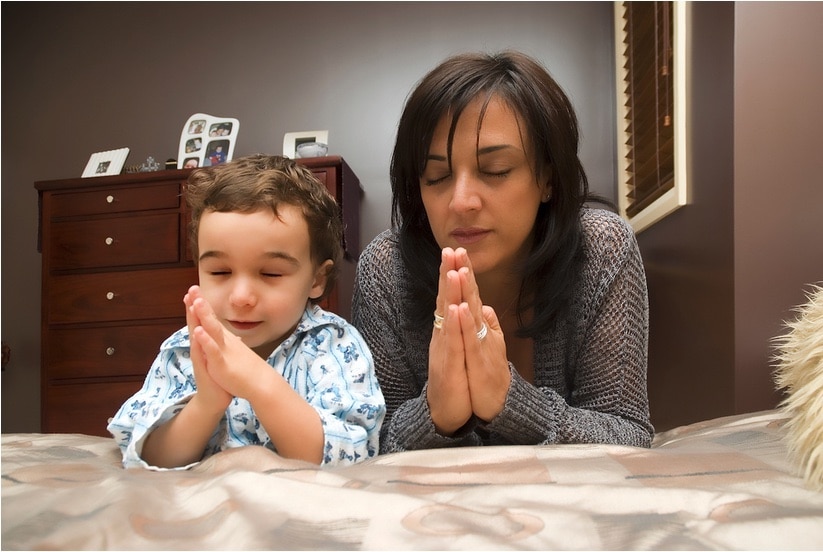
But what if it was a little simpler than that? What if revival, at the root of which is a renewal of our faith and a desire to be ever closer to the Lord, started in the places we already find ourselves most — at home? What if revival, this renewal and reawakening of the reality that Jesus loves us so much that he’d make himself tiny and small to consume, happened right where we are, doing perhaps the most important thing we’ll ever do — raising children, loving our kids, and sharing with them that God is real and loves them. What if revival, with all its trappings and plans and efforts, was this quite simple movement of the hearts of individuals who find themselves with the people they love and care for most, loving Jesus together?
If revival is a restoration of life, then that revival begins in the places where life is lived — the homes, among families, at dinner tables, in chapels filled with children, in Masses burgeoning with kids and in minivans on the way to school, with prayer cards of the Eucharist tucked into the visor.


